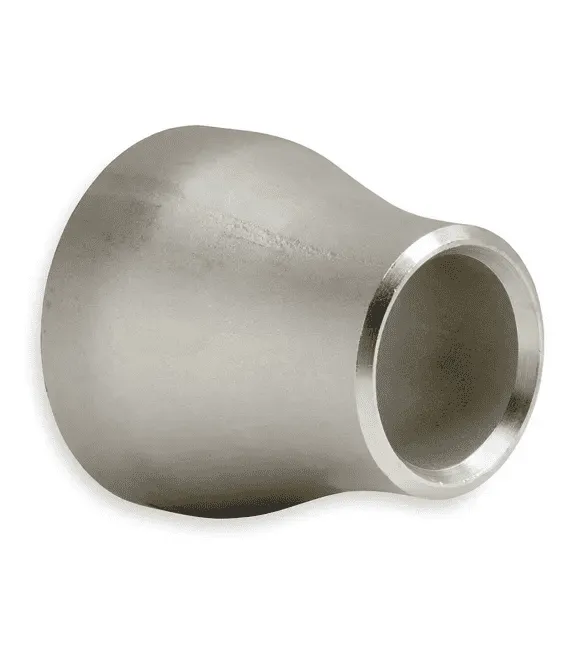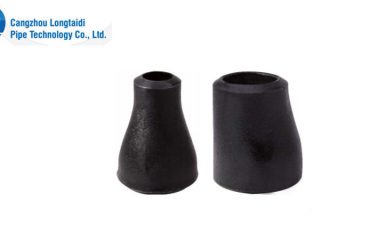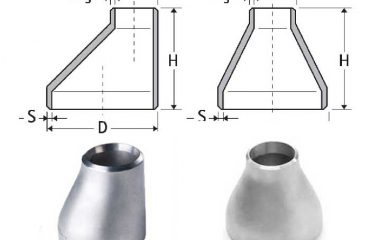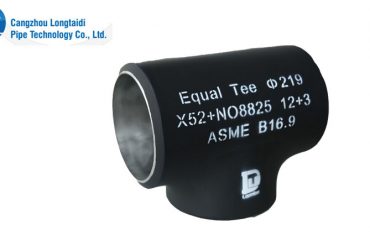
Tendenze e innovazioni future
The stainless steel industry is continually evolving, guidato dai progressi della scienza dei materiali, tecnologie di produzione, e la richiesta di prestazioni migliorate in ambienti estremi. Ecco alcune tendenze e innovazioni future che potrebbero avere un impatto sulla produzione e sull'applicazione dei riduttori in acciaio inossidabile ASTM A403 WP.
High-Performance Alloys
The development of high-performance alloys is a significant trend. These materials are engineered to offer superior corrosion resistance, forza, and durability in increasingly harsh environments.
- Superaustenitic Stainless Steels: Enhanced versions of traditional austenitic grades, such as AL-6XN, offering better resistance to pitting and crevice corrosion.
- Duplex and Super Duplex Stainless Steels: Combining the best properties of austenitic and ferritic steels, these materials provide excellent strength and resistance to stress corrosion cracking.
Produzione di additivi
Produzione di additivi (SONO), commonly known as 3D printing, is revolutionizing the production of complex components, including stainless steel reducers.
- Powder Bed Fusion (PBF): A popular AM technique for creating high-precision stainless steel parts layer by layer from metal powder.
- Directed Energy Deposition (DED): Suitable for repairing and adding material to existing components, extending their lifespan and reducing waste.
Advanced Heat Treatment Techniques
Innovations in heat treatment techniques are enhancing the properties of stainless steel reducers.
- Low-Temperature Carburizing (LTC): Improves surface hardness and wear resistance without compromising corrosion resistance.
- Advanced Annealing Processes: Yield better control over microstructural properties, enhancing both mechanical properties and corrosion resistance.
Smart Manufacturing and Industry 4.0
The integration of Industria 4.0 principles, including IoT (Internet of Things), big data, and AI (Intelligenza artificiale), is transforming manufacturing processes.
- Predictive Maintenance: Utilizing sensors and data analytics to predict and prevent equipment failures, ensuring consistent product qualità.
- Smart Factories: Implementing automated systems and robotics to enhance precision, Efficienza, and adaptability in production lines.
Environmental Sustainability
Environmental sustainability is becoming increasingly important in the stainless steel industry.
- Recycling and Circular Economy: Emphasizing the recycling of stainless steel to reduce raw material consumption and environmental impact.
- Eco-Friendly Processes: Developing manufacturing processes that minimize energy consumption and emissions, such as using renewable energy sources and cleaner production techniques.
Casi di studio
Caso di studio 1: Chemical Processing Plant
A major chemical processing plant required stainless steel reducers that could withstand highly corrosive environments involving sulfuric acid and chlorides. The plant chose WP904L for its exceptional resistance to these harsh chemicals.
Implementation:
- Selezione del materiale: WP904L was selected for its high nickel, Molibdeno, and copper content.
- Processo di produzione: The reducers were produced using closed-die forging, followed by solution annealing and electropolishing to enhance corrosion resistance.
- Prestazione: The WP904L reducers demonstrated excellent performance, with minimal maintenance and downtime over several years.
Caso di studio 2: Offshore Oil Platform
An offshore oil platform required robust reducers capable of withstanding high pressures, temperature, and corrosive seawater environments. WP316L was chosen for its balanced properties.
Implementation:
- Selezione del materiale: WP316L was selected for its resistance to chloride-induced corrosion and good mechanical properties.
- Processo di produzione: Forging and subsequent machining were used to produce the reducers, followed by pickling and passivation to restore the protective chromium oxide layer.
- Prestazione: The WP316L reducers performed reliably under harsh conditions, ensuring the integrity of the piping system.
Caso di studio 3: Power Generation Facility
A power generation facility needed high-temperature-resistant reducers for its boiler components. WP321 was selected due to its stability at elevated temperatures and resistance to intergranular corrosion.
Implementation:
- Selezione del materiale: WP321 was chosen for its titanium stabilization, preventing carbide precipitation.
- Processo di produzione: Open-die forging followed by solution annealing was used to produce the reducers.
- Prestazione: The WP321 reducers provided excellent performance, maintaining their integrity and resisting corrosion in high-temperature environments.
Appendix
Glossary of Terms
- Acciaio inossidabile austenitico: A category of stainless steel known for its excellent corrosion resistance and formability, characterized by a face-centered cubic crystal structure.
- Carbide Precipitation: The formation of chromium carbides at grain boundaries, which can reduce corrosion resistance.
- corrosione intergranulare: Corrosion that occurs along the grain boundaries of a material, often due to carbide precipitation.
- Molibdeno: A chemical element added to stainless steels to enhance corrosion resistance, particularly against chlorides.
- passivazione: A process that enhances the natural oxide layer on stainless steel, migliorandone la resistenza alla corrosione.
Domande frequenti
-
What is the difference between WP304 and WP316?
- WP316 contains molybdenum, which enhances its resistance to chloride pitting and crevice corrosion, making it more suitable for marine and chemical environments compared to WP304.
-
Why is WP904L preferred in highly corrosive environments?
- WP904L has high nickel and molybdenum content, along with copper, providing exceptional resistance to sulfuric acid and chloride environments.
-
How does additive manufacturing benefit the production of stainless steel reducers?
- Additive manufacturing allows for the creation of complex shapes, reduces material waste, and enables rapid prototyping and customization.
-
What are the advantages of using duplex stainless steels?
- Duplex stainless steels combine the best properties of austenitic and ferritic steels, offering high strength and excellent resistance to stress corrosion cracking.
-
How does heat treatment improve the properties of stainless steel reducers?
- Heat treatment processes like annealing and solution annealing refine the microstructure, relieve internal stresses, and enhance mechanical properties and corrosion resistance.
This extended guide should provide a comprehensive understanding of ASTM A403 WP stainless steel reducers, covering everything from material properties and manufacturing processes to future trends and practical applications.




Devi essere loggato per lasciare un commento.